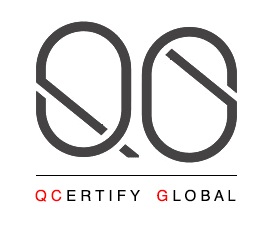The Role of AI and Automation in GRC Compliance
Enhancing Efficiency and Accuracy in Governance, Risk, and Compliance
Introduction
In today’s rapidly evolving business landscape, governance, risk, and compliance (GRC) have become critical components for organizations across all industries. The complexity of regulatory requirements and the increasing volume of data have made traditional manual approaches to GRC compliance both time-consuming and error-prone. Enter artificial intelligence (AI) and automation, which are revolutionizing how companies manage their GRC responsibilities.
The Convergence of AI, Automation, and GRC
AI and automation technologies are transforming GRC by streamlining processes, enhancing accuracy, and reducing costs. These technologies enable organizations to proactively manage risks, ensure compliance, and improve overall governance.
Automating Routine Compliance Tasks
One of the primary benefits of AI and automation in GRC is the ability to automate routine compliance tasks. These tasks include data collection, monitoring, and reporting. By automating these processes, organizations can reduce the time and resources spent on compliance activities, allowing employees to focus on more strategic initiatives.
Real-Time Monitoring and Reporting
AI-powered tools can provide real-time monitoring and reporting capabilities, allowing organizations to quickly identify and respond to potential compliance issues. These tools can analyze vast amounts of data from various sources, detecting patterns and anomalies that may indicate a risk or compliance breach. This proactive approach helps organizations stay ahead of regulatory requirements and avoid costly penalties.
Enhanced Risk Management
AI and automation can significantly enhance risk management by providing advanced analytics and predictive capabilities. These technologies can identify emerging risks, assess their potential impact, and recommend mitigation strategies. This level of insight enables organizations to make informed decisions and prioritize their risk management efforts effectively.
Improved Accuracy and Consistency
Manual compliance processes are prone to human error, which can lead to inaccurate reporting and increased risk of non-compliance. AI and automation technologies can improve the accuracy and consistency of compliance activities by eliminating manual errors and ensuring that all tasks are performed according to predefined standards and protocols.
Implementing AI and Automation in GRC
To fully leverage the benefits of AI and automation in GRC, organizations must carefully plan and implement these technologies. Here are some key steps to consider:
Assess Current GRC Processes
Begin by assessing your current GRC processes to identify areas where AI and automation can provide the most value. This assessment should include a thorough review of existing compliance tasks, data sources, and reporting requirements.
Select the Right Technologies
Choose AI and automation tools that align with your organization’s specific GRC needs. Look for solutions that offer scalability, flexibility, and integration capabilities with your existing systems. It’s also essential to consider the ease of use and support provided by the technology vendor.
Develop a Clear Implementation Plan
Develop a detailed implementation plan that outlines the steps required to integrate AI and automation into your GRC processes. This plan should include timelines, resource allocations, and key milestones. It’s also important to establish clear goals and metrics to measure the success of your implementation efforts.
Train Your Team
Provide comprehensive training to your team to ensure they understand how to use the new AI and automation tools effectively. Training should cover both the technical aspects of the technologies and their application within your GRC framework. Ongoing training and support will help your team stay up-to-date with the latest advancements and best practices.
Monitor and Refine
Continuously monitor the performance of your AI and automation tools to ensure they are delivering the desired results. Use the insights gained from this monitoring to refine and optimize your GRC processes continuously. Regular reviews and updates will help you stay ahead of emerging risks and regulatory changes.
Case Studies: Successful AI and Automation Implementation in GRC
Several organizations have successfully implemented AI and automation in their GRC processes, achieving significant improvements in efficiency, accuracy, and risk management.
Financial Institutions
Many financial institutions have adopted AI and automation to enhance their compliance and risk management efforts. These technologies have enabled banks to automate KYC (Know Your Customer) processes, monitor transactions for suspicious activities, and streamline regulatory reporting. As a result, they have reduced compliance costs and improved their ability to detect and prevent financial crimes.
Healthcare Providers
In the healthcare industry, AI and automation are being used to ensure compliance with strict regulatory requirements and improve patient care. Healthcare providers use these technologies to automate patient data management, monitor clinical trials, and ensure adherence to HIPAA regulations. This automation has led to increased efficiency and reduced the risk of compliance breaches.
The Future of AI and Automation in GRC
The role of AI and automation in GRC is expected to grow as these technologies continue to advance. Future developments may include more sophisticated AI algorithms, improved integration capabilities, and enhanced user interfaces. Organizations that embrace these advancements will be better positioned to navigate the complex regulatory landscape and achieve sustainable compliance.
Embracing Innovation with QCertify Global
At QCertify Global, we understand the importance of leveraging cutting-edge technologies to enhance your GRC compliance efforts. Our team of experts is here to help you navigate the complexities of AI and automation implementation, providing tailored solutions that meet your unique needs. By partnering with us, you can ensure your organization remains compliant, resilient, and competitive in today’s dynamic business environment.
Conclusion
The integration of AI and automation in GRC compliance offers numerous benefits, including increased efficiency, enhanced risk management, and improved accuracy. By adopting these technologies, organizations can stay ahead of regulatory requirements, mitigate risks, and achieve sustainable compliance.
At QCertify Global, we are committed to helping you harness the power of AI and automation to achieve your GRC goals. Contact us today to learn more about our innovative solutions and how we can support your compliance journey.
For more insights and guidance on AI, automation, and GRC compliance, visit QCertify Global’s website and subscribe to our newsletter. Stay ahead in the competitive landscape by embracing comprehensive and innovative compliance strategies today.




